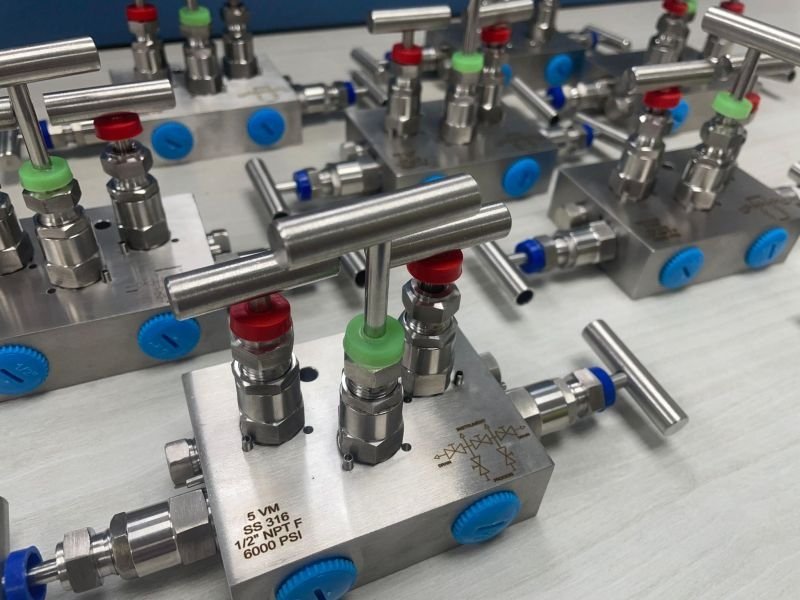
What is an Instrumentation Manifold and Why Do I Need One?
Instrumentation manifolds are a combination of several valves in one body with multiple connections. This piece of equipment assists pressure instruments directly and indirectly in measuring and equalizing pressures, differential pressures, static, gauge, and variable in process instrumentation lines by bleeding, blocking, and calibrating.
Manifolds offer multiple functions all within one product and are available in many different styles for several applications.
Mounting Style
Further more, there are two manifold mounting types that are important for your consideration. The two types are the remote mounting style and direct mounting style. As the name suggests, the direct mount style is where the manifold mounts directly onto pressure instruments. Direct mount valves typically use a combination of flange and threaded connections. Alternatively, remote mounting manifolds allow for installation away from the instruments using threaded connections exclusively.
Number of Valves / Layout
- On a single body, manifolds offer a variety of block and isolate valves along with openings that permit connections to pipe by threaded or flanged connections. The number of block and isolate valves depends on the manifold’s operation.
- RADILOK has 2-way, 3-way, and 5-way manifold configurations available with color-coded functions and pressure ratings up to 6,000 PSI. The color-coding functions are labeled as follows: red for drain, vent, and test, blue for isolate/block, and green for the equalizer valves.
- The following information is on the different types of manifold’s construction and is paraphrased from the Instrumentation and Control Qualification Reference Guide.
2-Way Valve Manifold:
- A typical composition of the 2-way valve manifold is 1 block valve and 1 drain or test valve.
- For use on a pressure transmitter to test pressure, the procedure is to close the block valve and open the drain valve. When the drain valve is opened, the next step would be to connect the valve to a pressure generator to test pressure.
- The 2-valve manifold is also called a block and bleed valve.
3-Way Valve Manifold:
- The 3-valve manifolds standard configuration includes 2 block valves and 1 valve, called an equalizer valve, which provides equal pressure on both sides.
- Differential pressure transmitters often use 3-way manifolds to operate making them the most commonly used manifold configuration.
- The method of a 3-valve manifold with a DP transmitter is to close the block valve and open the equalizer valve to check the zero of a DP transmitter.
5-Way Valve Manifold:
- DP transmitters also use 5-way valve manifolds.
- The composition of a 5-way valve manifold is similar to a 3-way valve manifold in that it has 2 block valves and 1 equalizer valve. The two valves that make it different are the additional vent or test valves.
- The method for calibration of a 5-valve manifold is to close the block valve and open the equalizing valve to check the zero of the transmitter.
- After equalizing the pressure, system operators connect the test valve of the manifold to a pressure generator for 3 or 5 point calibration.

